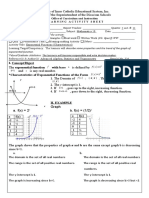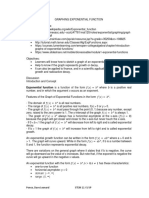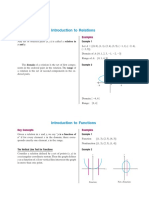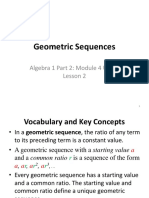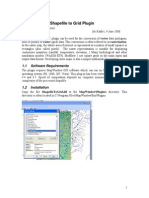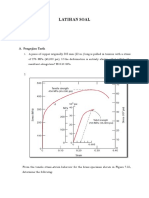0% found this document useful (0 votes)
187 views5 pagesIntroduction To Exponential Functions 32015
1. The document introduces exponential functions in the form y=abx, where a is the base and b is the exponent.
2. It provides examples of graphs of y=2x, y=2x2, and y=2x and asks students to identify similarities and differences between the equations, graphs, and finite differences.
3. The key properties of exponential functions discussed are that the graph always passes through the point (0,1), the graph gets steeper as it moves away from the y-axis but never touches the x-axis, and the value of the base affects the shape and steepness of the graph.
Uploaded by
Leslie CameronCopyright
© © All Rights Reserved
We take content rights seriously. If you suspect this is your content, claim it here.
Available Formats
Download as DOC, PDF, TXT or read online on Scribd
0% found this document useful (0 votes)
187 views5 pagesIntroduction To Exponential Functions 32015
1. The document introduces exponential functions in the form y=abx, where a is the base and b is the exponent.
2. It provides examples of graphs of y=2x, y=2x2, and y=2x and asks students to identify similarities and differences between the equations, graphs, and finite differences.
3. The key properties of exponential functions discussed are that the graph always passes through the point (0,1), the graph gets steeper as it moves away from the y-axis but never touches the x-axis, and the value of the base affects the shape and steepness of the graph.
Uploaded by
Leslie CameronCopyright
© © All Rights Reserved
We take content rights seriously. If you suspect this is your content, claim it here.
Available Formats
Download as DOC, PDF, TXT or read online on Scribd
/ 5







